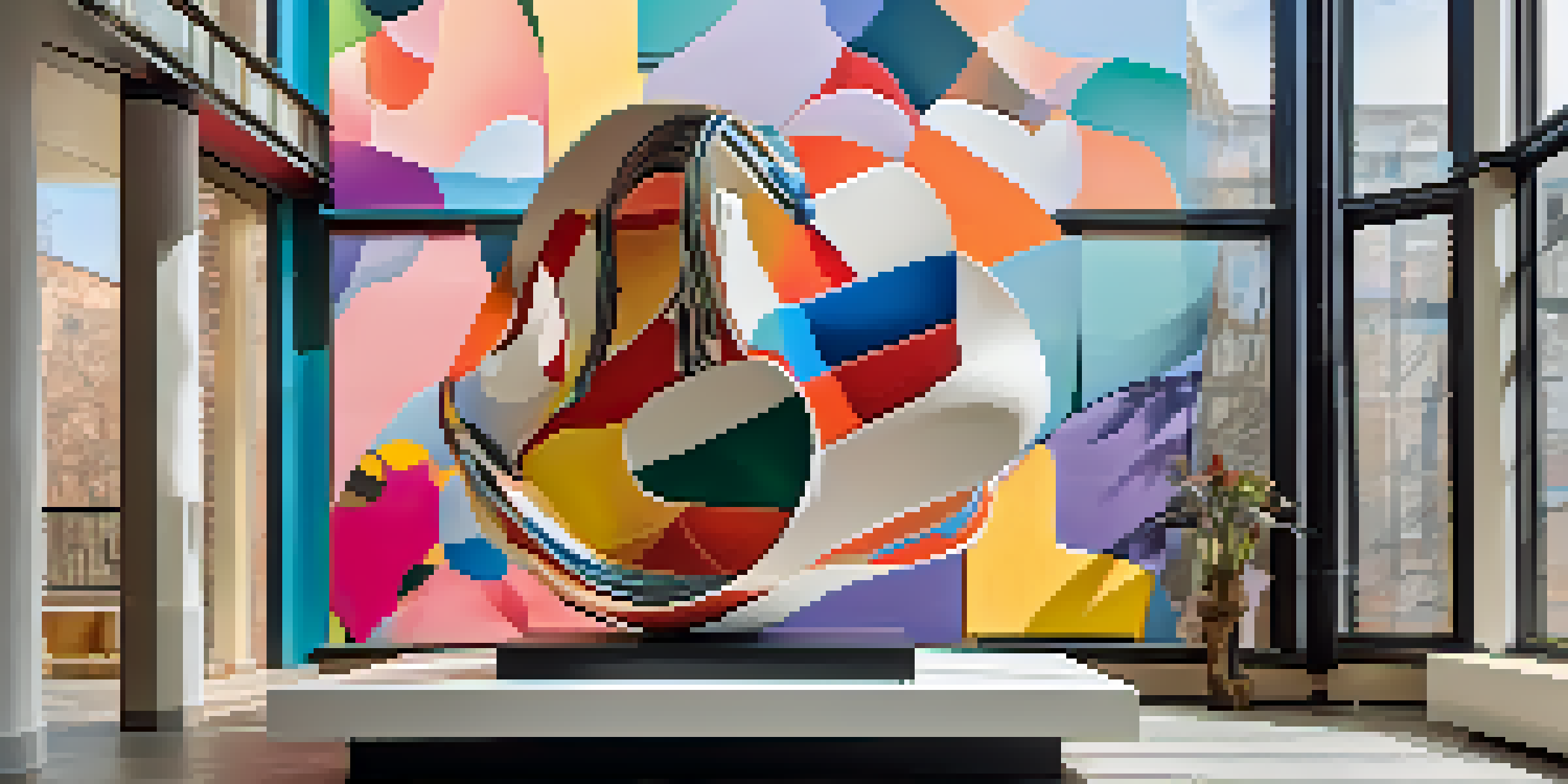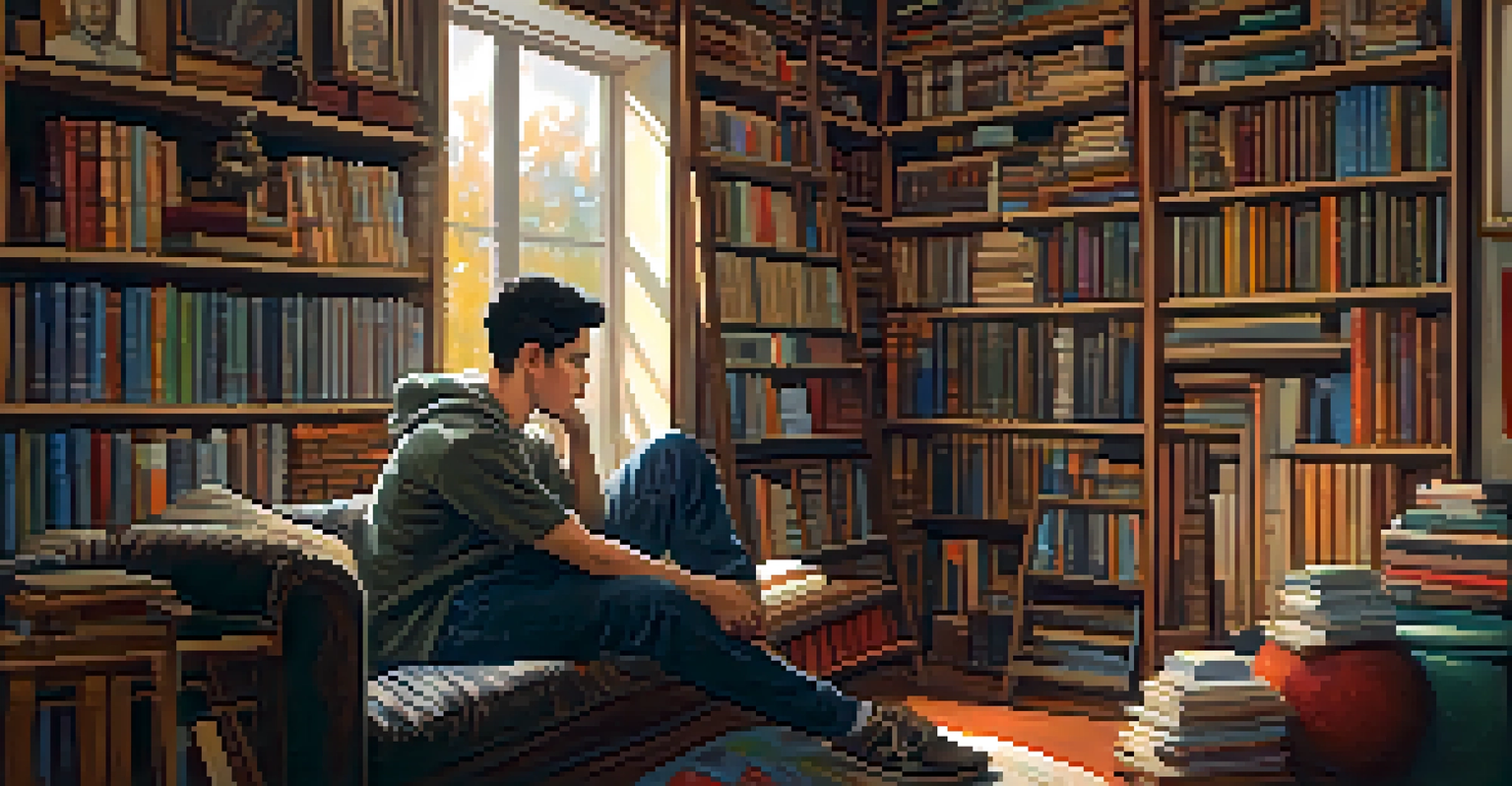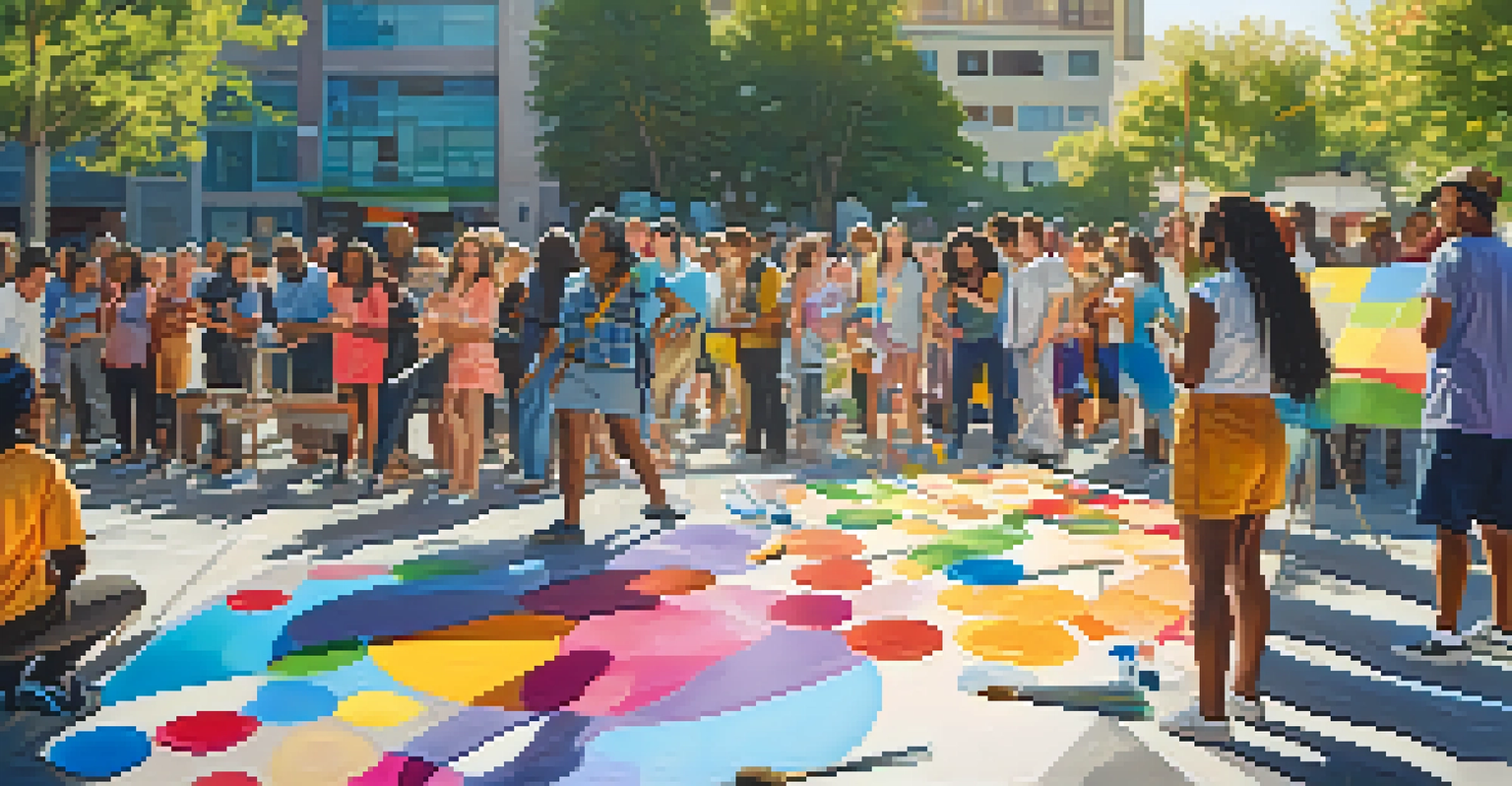Masculinity in Art: A Study of Representation and Critique

Understanding Masculinity: Definitions and Contexts
Masculinity is a complex social construct that varies across cultures and time periods. At its core, it often embodies traits such as strength, assertiveness, and independence, but these traits can manifest differently depending on societal norms. In art, masculinity is not just a subject; it serves as a lens through which we explore broader themes of identity and power. For instance, Renaissance paintings often depicted male figures as idealized embodiments of strength and intellect, reflecting the values of that era.
Masculinity is not a static concept but rather a shifting set of expectations, norms, and behaviors that vary across different cultures and historical contexts.
However, the representation of masculinity has evolved significantly. Contemporary artists challenge traditional notions by incorporating diverse perspectives that include vulnerability, emotional depth, and even fragility. This shift is crucial in understanding how masculinity is portrayed in modern art, as it reflects changes in societal attitudes towards gender roles. Artists like Kehinde Wiley and Nick Cave, for example, create works that celebrate black masculinity, offering a counter-narrative to historical stereotypes.
Ultimately, understanding masculinity within art requires us to engage with both its historical context and its contemporary interpretations. By examining these layers, we can appreciate how artists convey their views on masculinity, allowing for a more nuanced discourse on gender and identity in society.
Historical Perspectives: Masculinity in Classical Art
In classical art, masculinity was often represented through idealized forms, reflecting the values of strength and heroism. Think of Michelangelo's 'David,' where the male figure is not only a symbol of physical prowess but also a representation of civic virtue and moral integrity. This portrayal aligns with the Renaissance belief in the 'heroic male,' meant to inspire admiration and respect. Such artworks served to reinforce societal ideals surrounding manhood during their time.

Additionally, mythological themes frequently featured male figures as embodiments of power and dominance. For instance, the depictions of Greek gods highlighted exaggerated masculine traits, from physical strength to unyielding courage. These representations not only elevated the male figure but also established a standard that many artists would continue to emulate for centuries. Hence, classical art often functions as a mirror reflecting the prevailing ideals of masculinity in society.
Masculinity as a Social Construct
Masculinity varies across cultures and time, reflecting societal norms and evolving interpretations in art.
However, it is essential to critique these historical representations. By examining the underlying messages, we can see how they contribute to the limitations and expectations placed on men throughout history. This critique opens the door for contemporary artists to challenge and redefine what masculinity can look like today.
Modern Art Movements: Redefining Masculinity
As we move into the 20th century, modern art movements began to challenge traditional representations of masculinity. Artists like Pablo Picasso and Jackson Pollock introduced new forms that emphasized emotional expression, blurring the lines between strength and vulnerability. This shift allowed for a broader interpretation of masculinity, one that acknowledges the complexities of human experience. For example, Pollock's abstract expressionism invites viewers to engage with his emotional state, breaking away from rigid masculine ideals.
The future of masculinity will not be defined by traditional roles but will embrace a spectrum of identities that reflect the complexities of human experience.
Moreover, movements such as Dada and Surrealism further questioned societal norms, including those around gender. Artists like Marcel Duchamp and Salvador Dalí used irony and absurdity to explore the contradictions of masculinity. By subverting expectations, they opened up dialogue about what it means to be male in a rapidly changing world. This questioning is vital in understanding how modern art reflects evolving attitudes towards masculinity.
In essence, the redefinition of masculinity in modern art serves as both a critique and a celebration. It encourages viewers to reconsider their perceptions while embracing a more inclusive understanding of gender. This transformation allows for a richer conversation about identity that continues to evolve today.
Contemporary Artists: Challenging Traditional Masculinity
Today, a new wave of artists actively challenges and redefines traditional notions of masculinity. Artists like Cassils and Zanele Muholi use their work to explore themes of gender identity and representation, questioning the binaries that have long dominated discourse. Cassils, for example, uses performance art to embody male and female identities, creating a powerful commentary on the fluidity of gender. This approach invites audiences to engage with masculinity in a way that is both personal and profound.
Additionally, the rise of the LGBTQ+ movement has significantly influenced how masculinity is discussed in contemporary art. Artists from this community often confront stereotypes and offer alternative narratives. For instance, the work of David Hockney and Keith Haring not only celebrates queer culture but also critiques how masculinity is traditionally portrayed. Their art challenges viewers to rethink preconceived notions about gender and identity, making space for diverse expressions.
Intersectionality in Masculine Art
Intersectionality reveals how overlapping identities shape experiences of masculinity, allowing for diverse representations.
Ultimately, contemporary artists are pivotal in reshaping the conversation around masculinity. By embracing a more inclusive and multifaceted approach, they allow for a richer understanding of what it means to be male today. This ongoing dialogue is crucial as society continues to navigate the complexities of gender and identity.
The Role of Intersectionality in Masculine Representation
Intersectionality plays a crucial role in how masculinity is represented in art. This concept recognizes that individuals experience overlapping identities, such as race, ethnicity, class, and sexuality, which shape their experiences of masculinity. For instance, the portrayal of masculinity in the works of artists like Kehinde Wiley highlights the intersection of race and gender, illustrating how black masculinity has been historically marginalized. By centering these experiences, artists can provide a more nuanced view of masculinity that reflects the realities of diverse communities.
Moreover, intersectional representations challenge the monolithic concept of masculinity. They reveal the different ways in which men navigate societal expectations based on their unique identities. This is evident in the work of artists like Mickalene Thomas, who explores themes of femininity and masculinity through a lens of racial identity. By presenting a rich tapestry of experiences, these artists encourage viewers to engage with masculinity in a more inclusive manner.
In this way, intersectionality not only deepens our understanding of masculinity but also promotes empathy and awareness. By appreciating the diverse narratives that exist within masculine representation, we can foster a more holistic conversation about gender and identity in art.
Critique of Masculinity: Feminist Perspectives in Art
Feminist artists and critics have played a pivotal role in critiquing traditional representations of masculinity in art. By examining how art has perpetuated patriarchal values, they challenge the status quo and call for a reevaluation of gender norms. Artists like Judy Chicago and Barbara Kruger utilize their platforms to highlight the limitations imposed on both men and women by rigid gender roles. Their work often underscores the need for a more equitable representation of gender in the art world.
Moreover, feminist critiques have opened the door for a deeper understanding of how masculinity interacts with femininity. For example, the installation work of The Guerrilla Girls highlights the male-dominated art world and critiques the expectations placed on men to conform to certain ideals. By bringing these issues to light, feminist artists encourage a more balanced dialogue about gender representation, allowing for greater diversity in artistic expression.
Feminist Critique of Masculinity
Feminist artists challenge traditional masculine ideals, promoting a more equitable dialogue about gender representation.
Ultimately, feminist perspectives provide essential insights into the critique of masculinity. They urge us to question and dismantle harmful stereotypes, fostering a more inclusive environment for artists of all genders. This ongoing critique enriches the discourse around masculinity, pushing us toward a more equitable understanding of identity in art.
The Future of Masculinity in Art: Emerging Trends
As we look ahead, the future of masculinity in art seems poised for even greater transformation. Emerging artists are increasingly exploring themes of gender fluidity and non-binary identities, challenging the traditional binaries that have long dominated the conversation. This evolution suggests a move towards a more inclusive understanding of masculinity, one that embraces diversity and complexity. Artists like Aki Sasamoto and Mykki Blanco are at the forefront of this movement, using their work to explore the fluidity of gender expression.
Furthermore, technological advancements, such as digital art and social media, are reshaping how masculinity is represented and perceived. Platforms like Instagram allow artists to share their work widely, fostering a global dialogue around gender and identity. This accessibility encourages cross-cultural exchanges and challenges local norms, pushing the boundaries of traditional representations of masculinity.

Ultimately, the future holds promise for a richer exploration of masculinity in art. As artists continue to break down barriers and redefine what it means to be male, audiences are invited to engage in more meaningful conversations about gender. This ongoing evolution is essential, as it reflects the changing landscape of society and the diverse experiences that shape our understanding of identity.